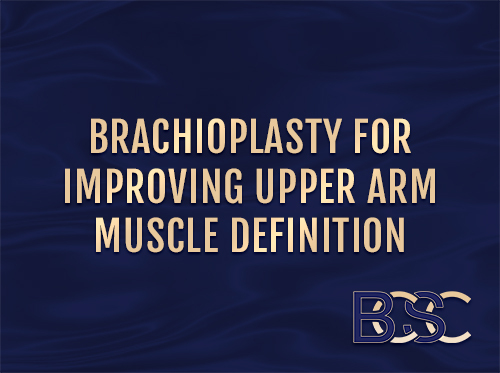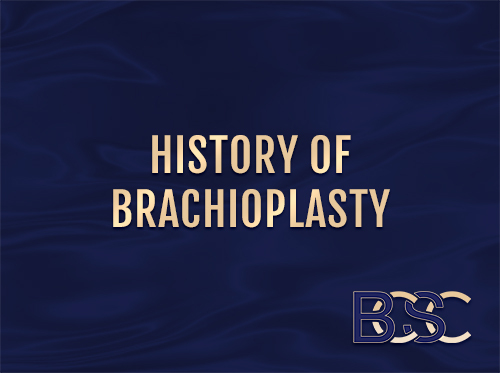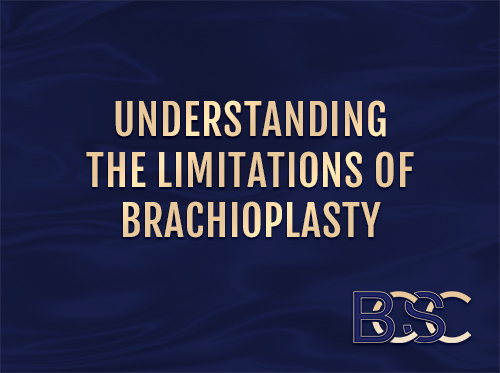Recovery Process After Brachioplasty Surgery
From the moment you wake up after surgery to the day you finally enjoy your healed results, understanding what recovery looks like can help you feel more prepared. This guide explains the stages of recovery after brachioplasty (arm lift surgery), what you may experience along the way, and useful tips to support the healing process.
Recovery After Brachioplasty Surgery: Disclaimer
The information below is a general guide. Everyone heals at a different pace, and your own recovery may not match this timeline exactly. This article is designed to help you understand what the recovery journey may look like, but your surgeon’s instructions always take priority.
Brachioplasty
Recovery Timeline
Right After Waking Up from Surgery
When you wake up in the hospital recovery room, you may feel groggy. Compression garments will be fitted to your upper arms, and drainage tubes may be in place. Dr Beldholm applies a PICO negative pressure dressing during surgery to support wound healing.
- Expect some bruising, swelling, and tightness in the arms.
- Your hands may feel puffy, similar to wearing boxing gloves.
- Discomfort is usually worst in the first 24 hours but gradually improves over the following days.
- Most patients stay one night in hospital, although those who had more extensive surgery may need to stay longer.
- Light walking is encouraged to reduce the risk of blood clots, but avoid strenuous activity.
Week 1: Initial Recovery Phase
Once home, you’ll need support from a family member, friend, or carer for the first 24 hours. Driving is not possible for at least one to two weeks.
- You will attend follow-up appointments with Dr Beldholm during this period.
- Swelling and tenderness remain noticeable. Pain medication will help manage discomfort.
- Sleeping with your arms slightly elevated may reduce swelling.
- Bruising typically takes up to two weeks to resolve.
- Bathing is limited to sponge baths (“bird baths”) until the PICO dressing is removed at day 7–9. At this stage, Hypafix tape is usually applied, allowing you to shower again.
- Avoid lifting, stretching, or household chores such as laundry and cooking.
Weeks 2 to 3: Mid-Recovery Phase
By this stage, bruising has usually faded, and discomfort lessens significantly.
- Swelling is still present but less intense.
- You may be cleared to resume driving, light activities, and office-based work.
- Short, gentle walks should continue, but avoid heavy lifting and vigorous exercise.
- Daily routines will start to feel more manageable.
Weeks 4 to 12: Final Recovery Phase
The arms will feel firmer but gradually soften as swelling decreases.
- Light jogging or low-intensity workouts may be approved after 3–4 weeks, depending on healing progress.
- Occasional sharp or tingling sensations near the incision may occur as nerves heal.
- Continued follow-up visits with Dr Beldholm ensure healing is on track.
- Full resolution of swelling may take 6–12 months.
Month 6 and Beyond: Seeing Your Results
At this stage, most of the healing is complete.
- The tight feeling in the arms usually resolves.
- Scars begin to fade and may continue to improve for up to 18 months.
- Results become more refined as swelling subsides.
Brachioplasty
Recovery Tips
Following your surgeon’s instructions is the most important step to achieving a smooth recovery. General recommendations include:
- Sleep with arms elevated (on your chest or supported by a pillow).
- Eat a nutritious, balanced diet and stay hydrated.
- Avoid smoking for at least six weeks (preferably stop altogether).
- Limit salty foods, as these can worsen swelling.
- Wear your compression garments as directed to control swelling.
- Ask for help with daily tasks during the early weeks.
- Avoid lifting heavy objects or exercising until cleared by your surgeon.
- Keep your incision site clean and dry.
- Take medications exactly as prescribed.
- Go for short walks every few hours to improve circulation.
- Attend all scheduled follow-up visits.
- Contact your surgeon immediately if you notice unusual pain, swelling, or signs of infection.
Frequently Asked Questions
Will I need to stay overnight in hospital?
Yes. While some surgeons may discharge patients the same day, Dr Beldholm prefers an overnight stay to monitor recovery closely.
How long does recovery take?
Most patients feel comfortable driving and returning to light duties within 1–2 weeks. Bruising fades in 2–3 weeks, while swelling may persist for several months. Final results can take 12 months to appear.
How painful is the recovery period?
Pain levels vary depending on the amount of tissue removed and individual tolerance. Discomfort is usually managed well with prescribed medications.
What if my pain worsens?
Contact your surgeon immediately if pain suddenly increases or if swelling becomes severe. This may indicate a complication requiring prompt attention.
How long do scars take to fade?
Scars are permanent but usually fade significantly over 12–18 months. Scar management may include silicone sheets, topical creams, LED light, or laser therapy.
Why are my arms swollen?
Swelling is a normal part of healing. It peaks in the first week and gradually improves over the following months.
Will I need compression sleeves?
Yes, compression garments are usually required for several weeks to help reduce swelling and support the healing tissues.
Is brachioplasty worth it?
Many patients report satisfaction with their results. However, satisfaction varies, and it is important to discuss your expectations with your surgeon before proceeding.


